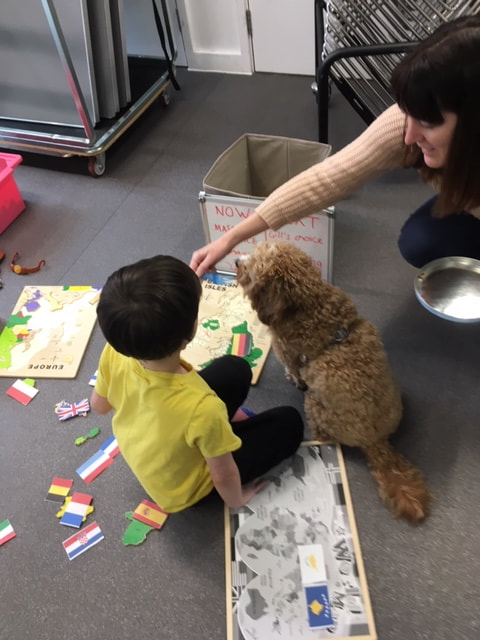“Clinically speaking it is hard to imagine a better pairing of attributes – a tool that can simultaneously engage and relax the person”
Animal Assisted Therapy is a goal directed intervention in which the animal is an integral part of the treatment process. Key features include SMART goals and objectives and outcome measurement.
Animal Assisted Activity offers the opportunity to improve quality of life through motivational, recreational or therapeutic benefits. There are no defined goals, rather a focus on spontaneous content in the session.
Animals can quickly induce a de-arousing physiological state of relaxation and stress reducing social support. There is extensive research documenting the positive link between social support and human health.
Animal-Assisted Therapy. Theoretical Foundations and Guidelines for Practice. 3rd Edition. A, Fine. (2010). Academic Press.
Animal Assisted Activity offers the opportunity to improve quality of life through motivational, recreational or therapeutic benefits. There are no defined goals, rather a focus on spontaneous content in the session.
Animals can quickly induce a de-arousing physiological state of relaxation and stress reducing social support. There is extensive research documenting the positive link between social support and human health.
Animal-Assisted Therapy. Theoretical Foundations and Guidelines for Practice. 3rd Edition. A, Fine. (2010). Academic Press.
Please see the references below for links to some key research and evidence-based practice for AAT:
- Collis, G.M., & McNicholas, J. (2001). A theoretical basis for health benefits of pet ownership: attachment versus psychological support. In C.C. Wilson & D.C. Turner (Eds.), Companion Animals in Human Health (pp. 105-122). Thousand Oak, CA: Sage.
- Fick, K.M. (1993). The influence of an animal on social interactions of nursing home residents in a group setting. American Journal of Occupational Therapy: 47:529–534.
- Friedman, E., Catcher, A.H., Thomas, S.A., Lynch, J.J. (1980). Animal companions and one-year survival of patients after discharge from a coronary unit. Public Health Reports, 95, 307-312
- Friedman, E. & Thomas, S.A. (1995). Pet ownership, social support, and one-year survival after acute myocardial infarction in the Cardiac Arrhythmia Suppression TRIAL (CAAST). American Journal of Cardiology, 76, 1213-1217.
- Friedman, E., Thomas, S.A & Eddy, T.J. (Eds.), (2000). Companion Animals and Human Health: Physical and Cardiovascular Influences. New York, NY: CUP.
- Garrity, T.F., & Stallones, L. (1998). Effects of pet contact. In C.C. Wilson & D.C. Turner (Eds.), Companion Animals in Human Health (pp. 3-22). Thousand Oak, CA: Sage.
- Hall, S. S., Gee, N. R. & Mills, D. S. (2016). Children Reading to Dogs: A Systematic Review of the Literature. Public Library of Science, 11(2).
- Martin, F., & Farnum, J. (2002). Animal-Assisted Therapy for Children with Pervasive Developmental Disorders. Western Journal of Nursing Research, 24(6), 657–670.
- Schuck, S. E., Emmerson, N. A., Fine, A. H., & Lakes, K. D. (2013). Canine-assisted therapy for children with ADHD: preliminary findings from the positive assertive cooperative kids study. Journal of attention disorders, 19(2), 125-37.
- Siegal, J.M. (1990). Human/Pet Relationships Measure. Stressful life events and use of physician services among the elderly: the moderating role of pet ownership. Journal of Personality and Social Psychology, 58, 1081-1086.

